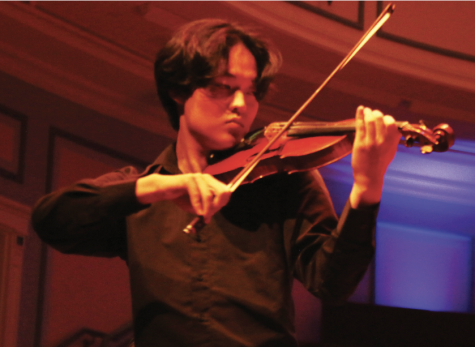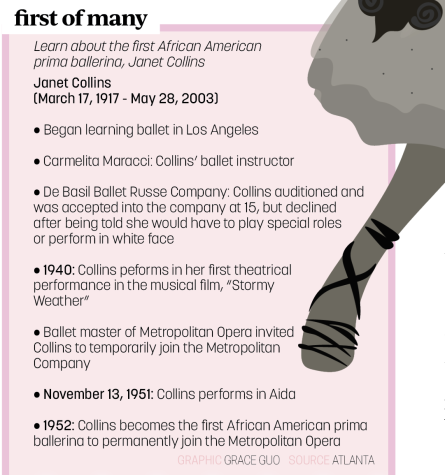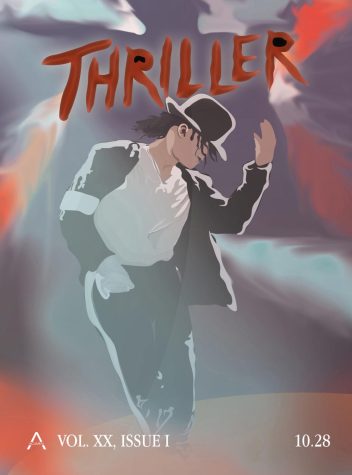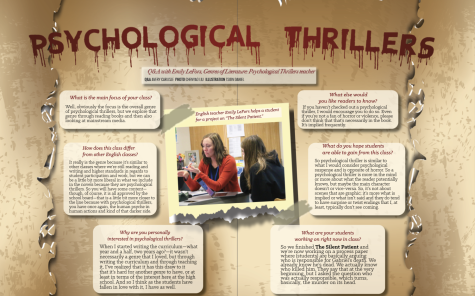Breaking Barriers
Students, staff in performing arts reflect on experiences with racial barriers
Gabrielle “Gabi” Bradley, Ambassadors member and junior, has been surrounded by music for her entire life, primarily because of her family’s celebration of the arts.
“We’re very musically and arts focused,” she said. “I think that’s also black culture. Everyone sings. I’ve just always been surrounded by singing.”
Bradley said the focus on music in her life has led her to want to pursue a career in musical theater, and with increasing representation of people of color in the arts, her hopes have increased.
One example of these new roles is Disney’s The Little Mermaid remake. On Sept. 9, 2022, Disney released a new teaser trailer depicting actress Halle Bailey as “Ariel,” receiving both praise and backlash for the originally white character’s representation by a black actress.
This change is not universal, however. According to the Asian American Performers Actors Coalition’s 2018-19 visibility report, 58.6% of Broadway roles were occupied by white actors, overrepresenting the NYC white demographic by over 25%.
Stages are not the only places dominated by racial barriers, however. According to Ishaan Signh, We Have All Music (WHAM) events chair and senior, classical music training and music theory are almost solely composed of western influences.
“In advanced music classes (instructors teach) 17th century western European style, which is only a small subsection of music,” he said.

Senior Brayden Meng plays the violin at the WHAM Palladium performance on Sept. 28, 2022.
Brayden Meng, WHAM founder and president and senior, said he agrees with this sentiment.
“(When you learn music) you have a lot of western rules,” he said. “For one, you can’t have parallel fifths moving together, but you’ll see a lot of that in Eastern Asian music.”
Singh said he thinks there are a lot of stereotypes surrounding Asian cultures and music.
“The stereotype (that Asian parents force their children into studying music) is definitely harmful,” Singh said. “It’s not good to have a prior mindset about what someone’s gonna be.”
The stereotypes Singh highlighted, however, do not stop him from finding value in music and sharing cultural pieces through WHAM.
I’ve just been learning a lot of really random pieces,” he said, “because I never would have heard (this music) otherwise. And it’s honestly kind of shocking how accessible information (about small cultural composers) is.”
Bradley says she thinks there is value in learning culturally diverse music, but it has to be taught in a respectful way.
“((Mr. Barker) shows us videos (of the cultural songs we sing) and tells us what the words mean. We learn the context of the piece to the culture it’s from and we perform it in a similar way to how (the piece would be) in their rituals,” she said.
Associate Choir Director Kyle Barker said he is deliberate in both how he picks and teaches his music. He said he is always listening to songs he thinks would enrich his students, and if he is not comfortable teaching cultural pieces himself, he tries to bring in professionals of the represented community.
This step towards breaking barriers, however, was not present even in recent years, according to Bradley.
“We used to sing wade in the water in fourth grade, and even then, I felt like we shouldn’t be singing it,” Bradley said. “But sometimes, instead of appreciating the culture, you take the music and you sing it like a song. And it’s not a song like to these people– it means more than that.”
Singh differed in his view about CHS music representation.
“If you’re (spreading any music) in a way that’s not derogatory, like taking music and making fun of it, if you’re doing it just to perform it and spread that culture, it’s not necessarily a bad thing,” he said.
Nonetheless, Bradley said she is tired of traditionally “black” music like Gospel being sung by choirs at this school.
“The sound is always wrong when a primarily-white choir tries to sing gospel,” she said. “I feel like we can just let (white choral gospel) die, and not do that anymore.”
Similar to how Bradley intends to pursue a career in musical theater, Meng said he wants to work as a film score composer in the future. He said he has been learning the skills required in composition for a few years, and has begun to develop a personal voice in his music.
“So I’m kind of taking not only inspiration from Western classical music, where I was trained, but also from modern influences, and my cultural roots,” Meng said. “I’m working on a violin concerto for the senior concerto competition right now. And I feel like (this piece is) what best describes the culmination of (my musical style).”
Barker said he is thankful for the chance to learn from other cultures through the music the school performs, but recognizes learning is not the final step needing to be taken.
“It’s a fine line of making music accessible without changing the original intent, and recognizing that maybe some songs shouldn’t be (sung) in a school choir,” he said. “I think the choral world is in a spot of learning and growth overall. And I think everybody’s intent is on the right track, but mistakes are gonna be made along the way.”
Bradley said she’s thankful for the progress being made, but she has seen many mistakes even within Carmel Choirs.
“Last year we had our signature dresses, and (the dresses) had a panel on the front. Eventually they removed it, but it was white mesh. On all the white girls it looked normal, like a fake strapless dress, but on me and my (black) friend, it looked stupid. It was frustrating,” she said. “It felt a little annoying to see things around me all the time that were just another reminder that the activity wasn’t catered to people like me. (Performing barriers) can be frustrating and isolating in some aspects.”
This year, the Ambassadors costumes Bradley is wearing does not contain a pale panel. She said she is happy for the changes made in the choir department in the short period of time, and hopes it can pass into the rest of the performing world.
“I need to stop typecasting myself. You can (play) any role you want to. You can be any person you want to be. You can’t let people put you into the box of a gospel singer or Dream Girls,” she said. “And if you are doing Dream Girls, you do that, because I couldn’t sing that way anyway. Don’t let something that hasn’t happened before keep you from being the person to do it.”





